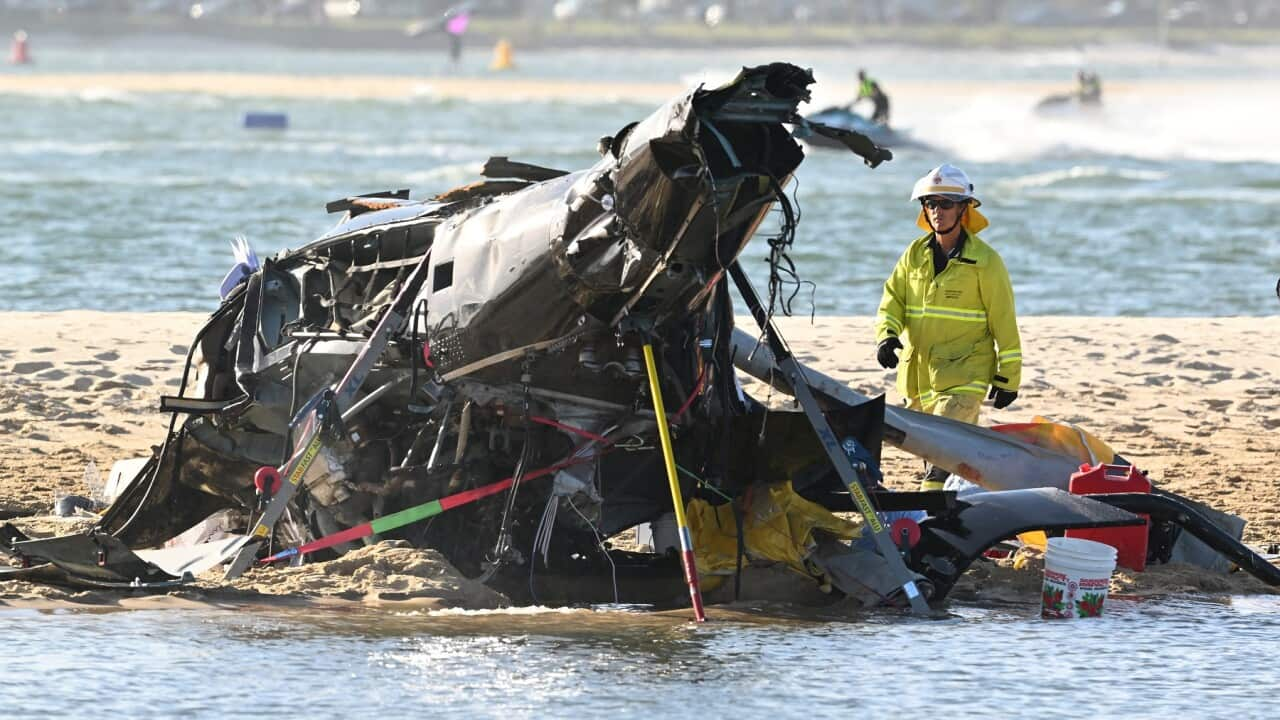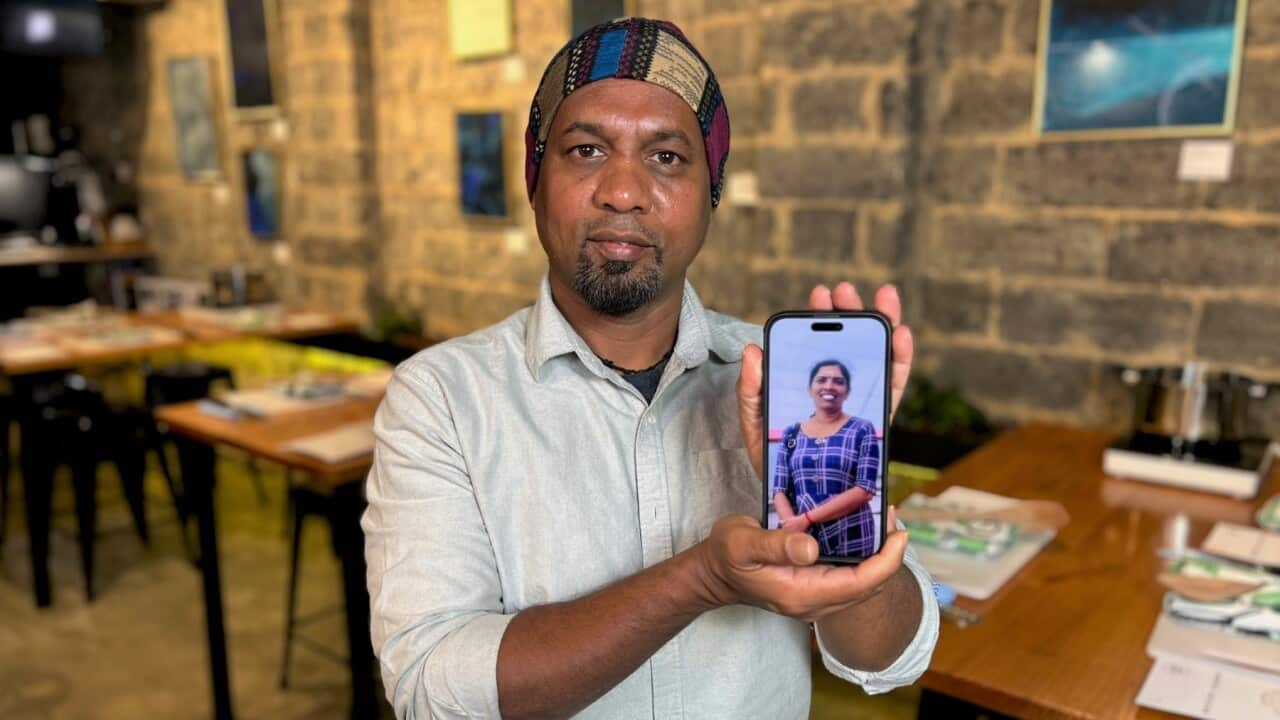TRANSCRIPT
The mid-air collision between two helicopters over the Gold Coast Broadwater a year ago killed Sea World Helicopters chief pilot Ashley Jenkinson, New South Wales woman Vanessa Tadros and British couple Diane and Ron Hughes.
Three others were seriously injured.
The helicopters, which were conducting five-minute joy flights, crashed into each other while one was taking off and the other was landing.
An interim report from the Australian Transportation Safety Bureau highlights pilot Ashley Jenkinson had used cocaine somewhere between one and three to four days before the crash.
The Chief Commissioner of the ATSB is Angus Mitchell.
"It does show low levels of cocaine metabolites. So, we know that exposure was probably not within the 24 hours of the incident but somewhere between that one and potentially 3 to 4 days prior. They were low levels. We don't have any evidence to suggest that they were contributing to this particular incident but we do know that any types of illicit drug use does carry risks and certainly risks in this type of industry so for that reason it is highlighted in the report but equally as I've said, we don't have evidence to suggest that it was contributory in nature."
While noting it would have been unlikely for the cocaine use to have caused any psychomotor skill impairment on the day of the accident, the report says it is not known whether post-cocaine exposure effects of the drug which can include fatigue, depression and inattention had any effect on the performance of the pilot.
One issue being examined by the ATSB is whether all standard procedures were followed on the day of the crash.
That includes whether a radio taxiing call was made by Ashley Jenkinson.
There was no such call detected by the Southport control tower and no one else that was in the air that day recalls hearing it.
Angus Mitchell again.
"I guess we're developing a much better picture around what was a standard call and what may well have been recorded but also some of the limitations and we do know that once the helicopters were down below that 200 foot mark, and that's where the incident occurred, a lot of that radio traffic isn't heard, certainly not recorded because of the, I guess, the buildings in that area, so we're trying to better understand what calls were made but equally around whether there was any deviation from this flight to what would be the standard flights out of there."
The pilot of the other helicopter, Michael James, managed to land safely, despite the damage to his chopper.
He was taken to hospital and discharged two days later.
The report finds that while he reported consenting to testing for alcohol and other drugs and bloods were taken, no alcohol and drug testing was conducted.
In a statement, the Civil Aviation Safety Authority says it has zero-tolerance towards pilots operating under the influence of alcohol or other drugs.
In Australia, pilots are prohibited from flying if they have had any alcohol within 8 hours of take-off.
The interim report has also found some of the passengers did not have their seatbelts correctly fitted and while it wasn't a causal factor in the fatalities or the severity of their injuries, the ATSB found the issue was widespread, not only for Sea World Helicopters, but more broadly around Australia.
On the 12-month anniversary of the crash, Simon Tadros posted a tribute to his wife, Vanessa Tadros, on Facebook.
He described the day of the crash as the worst day of his life-a day that changed his life forever when his wife was killed and his young son Nicholas was seriously injured.
"Vanessa was the most beautiful soul a person could have. Her heart was always filled with love and compassion for everyone. I ask that everyone today remember all the good times and the laughs that they shared with Vanessa. I ask we pray not only for Vanessa but also for everyone that lost their lives in the Sea World Helicopter accident, and for their families as well. Vanessa will never be forgotten."
In the 12 months since the crash, See World Helicopters has introduced extra procedures, including an on-the-ground staff member who gives information to helicopter pilots prior to departure.
It says all its additional measures have been approved by the Civil Aviation Safety Authority and go above and beyond existing Australian aviation law requirements.
The final report from the Australian Transportation Safety Bureau is expected to be published in the second half of this year.













